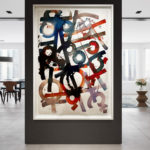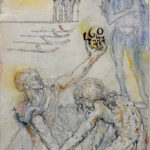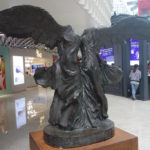He sits, hunched and in deep and brooding contemplation. Despite the morose tone, he has become one of the most recognizable images in Art History. He is Auguste Rodin’s (1840-1917) “Le Penseur” (The Thinker). Originally executed in 1880 as a portrait of the poet Dante, whose “Inferno” would be the subject of Rodin’s masterpiece, “The Gates of Hell” (l’Porte de l’Enfer) the Poet (La Poete) became a generalized image not just of Dante, but all creators. Rodin reimagines Dante’s “La Divina Commedia” as a pullulating morass of tarry elements with bodies which are partially articulated and powerful, their essence is still formative. Silently, they grasp at dawn through the chaos for formation.
A fitful sleep. A hallucination made real.
Partially owing to a controversy over one of Rodin’s earlier bronzes, “L’Age derain”, the artist tended to exaggerate motion, proportion and body positioning, thus allowing him to experiment with twisted unnatural movements and painful contortions.
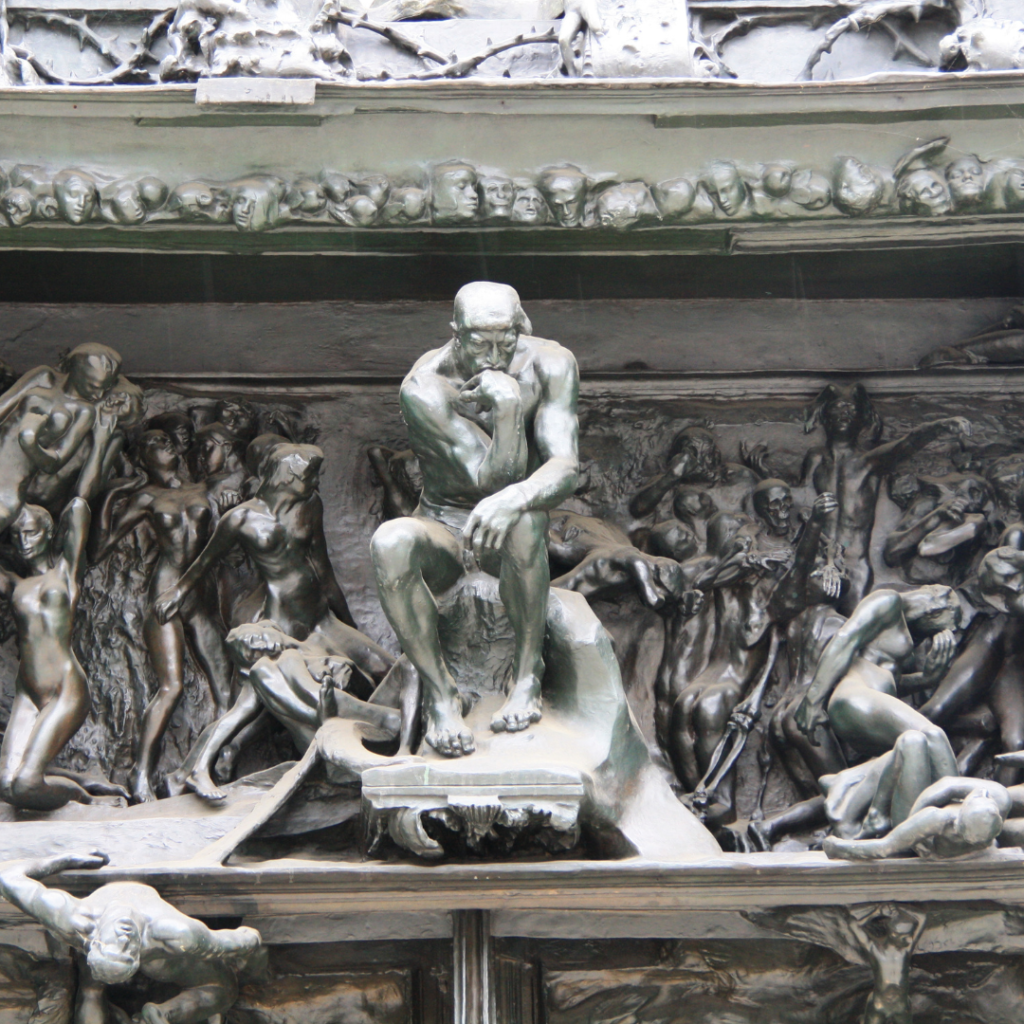
Years after it was initially conceived, Rodin decided it should be a freestanding, monument to Man himself. Removing the literary context allowed viewers to see “The Poet” (as it was originally named) as the Every Man. Still hulking and brooding, but also contemplative and serene. Tensed toes juxtaposed relaxed wrists, and a twisted torso giving way to pensive thought. Thus giving rise to the newly adopted name, “Le Penseur”.
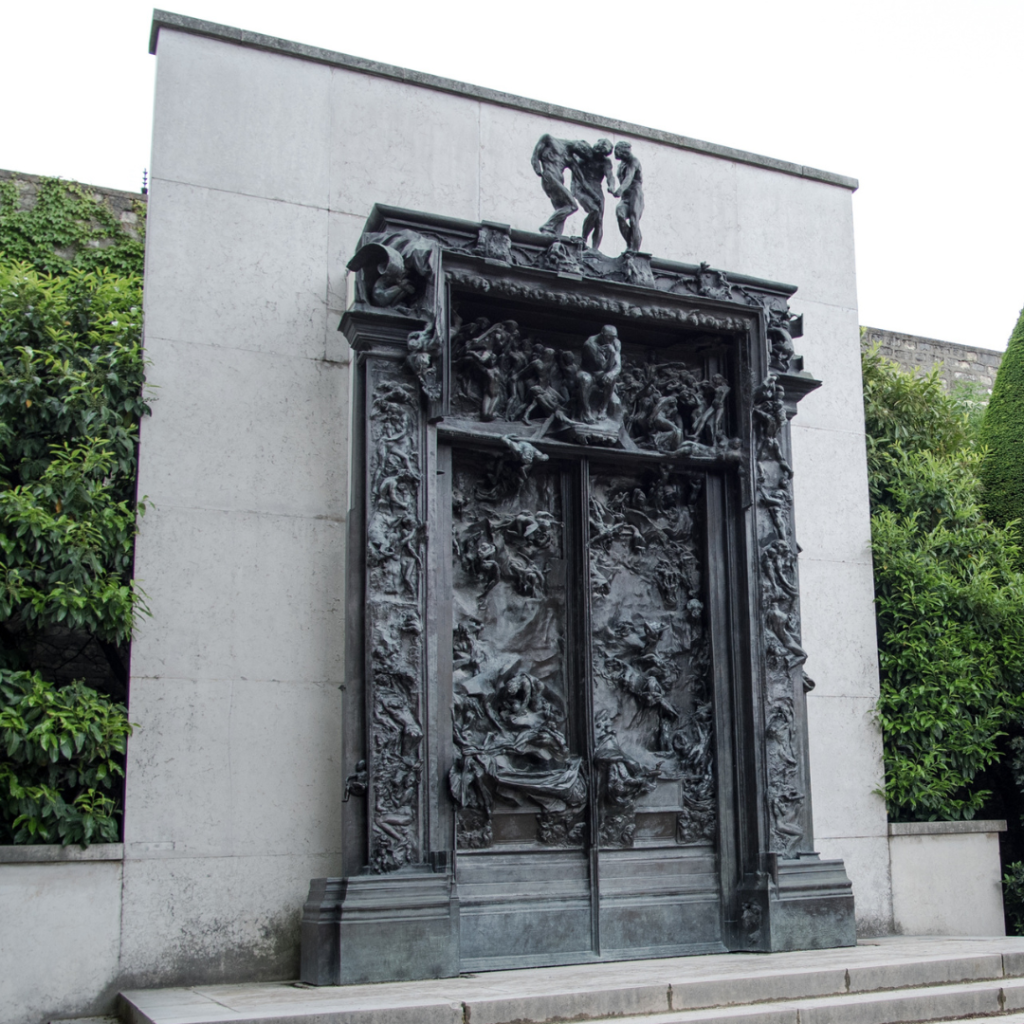
In 1902, Rodin commission a professional reducteur named Henri Lebossé (1845-1922) to enlarge the work onto a monumental-scale and in 1903, the first bronze cast was completed and sent to the 1904 World’s Fair in St. Louis, MO (USA). Later, it was purchased by art lover Arthur Hopkins who placed in at the University of Louisville, in Kentucky. In sum total, Rodin saw as many as 8 casts completed before his death in 1917, but the one at UofL is said to be the first. It is rumored he disliked the bronze casting and sent it to the USA because Americans were not sophisticated enough to know a good cast from a bad one. Others were placed at the Pantheon (Paris), Palace Legion of Honour (San Francisco), The Rodin Museum (Paris), The Carlsberg Glyptotek (Copenhagen) and the Metropolitan Museum (New York)
Rodin’s “Penseur” gives physicality to thought itself. Non-emotive, unmoving, and resolute, “Le Penseur” has epitomized artistic creation and become one of the world’s most enduring visual statements.

(Text Reed V. Horth, 2022)

